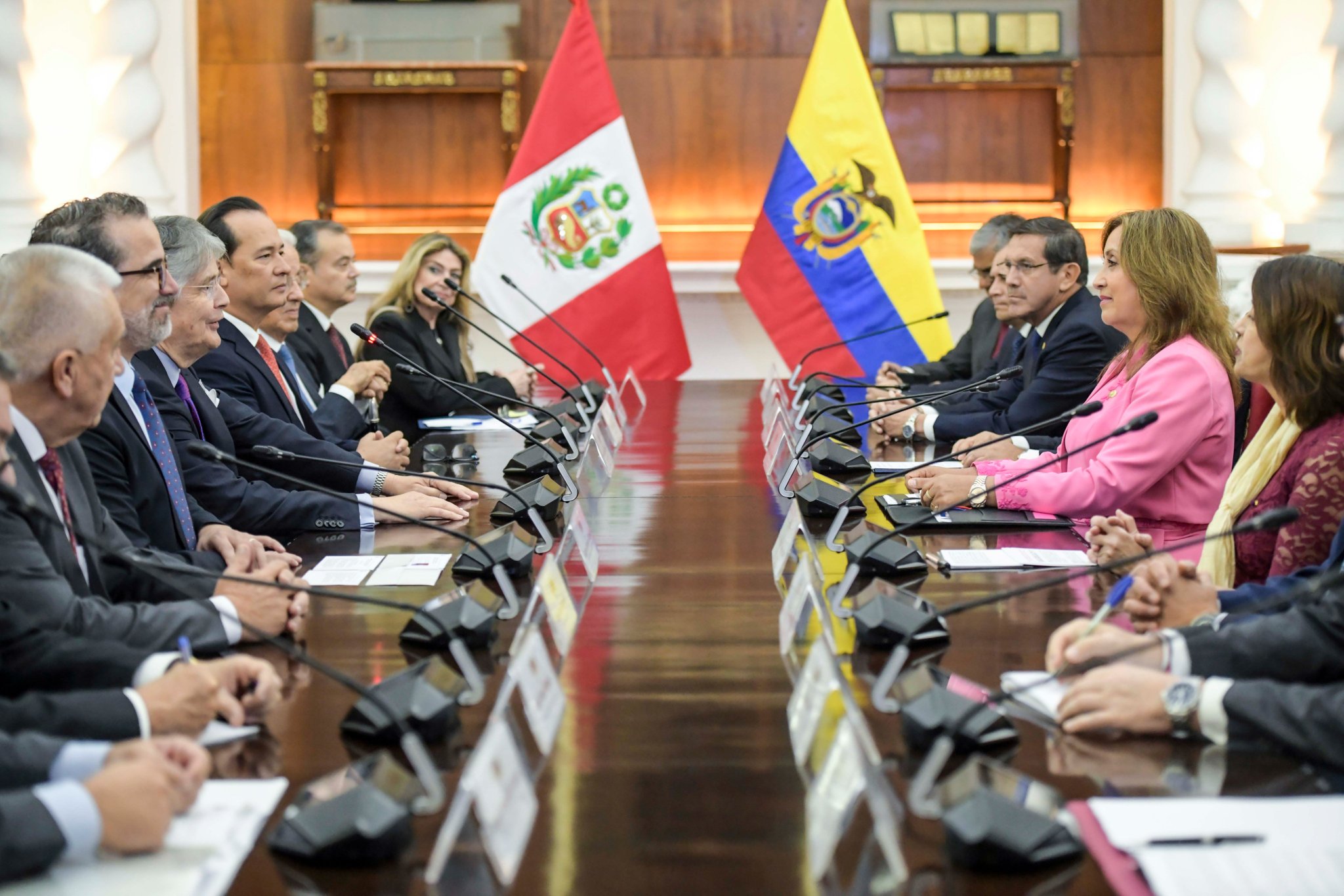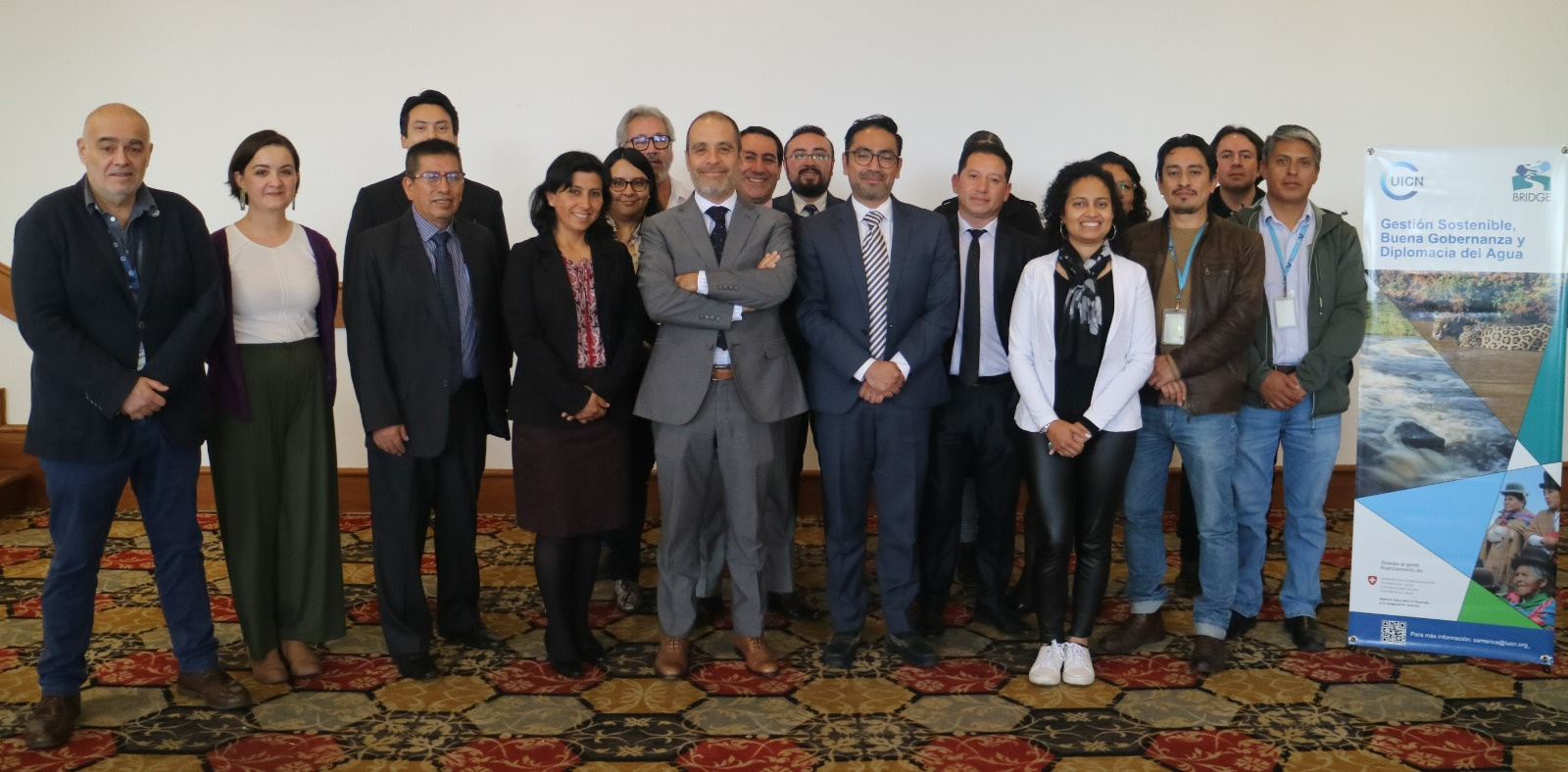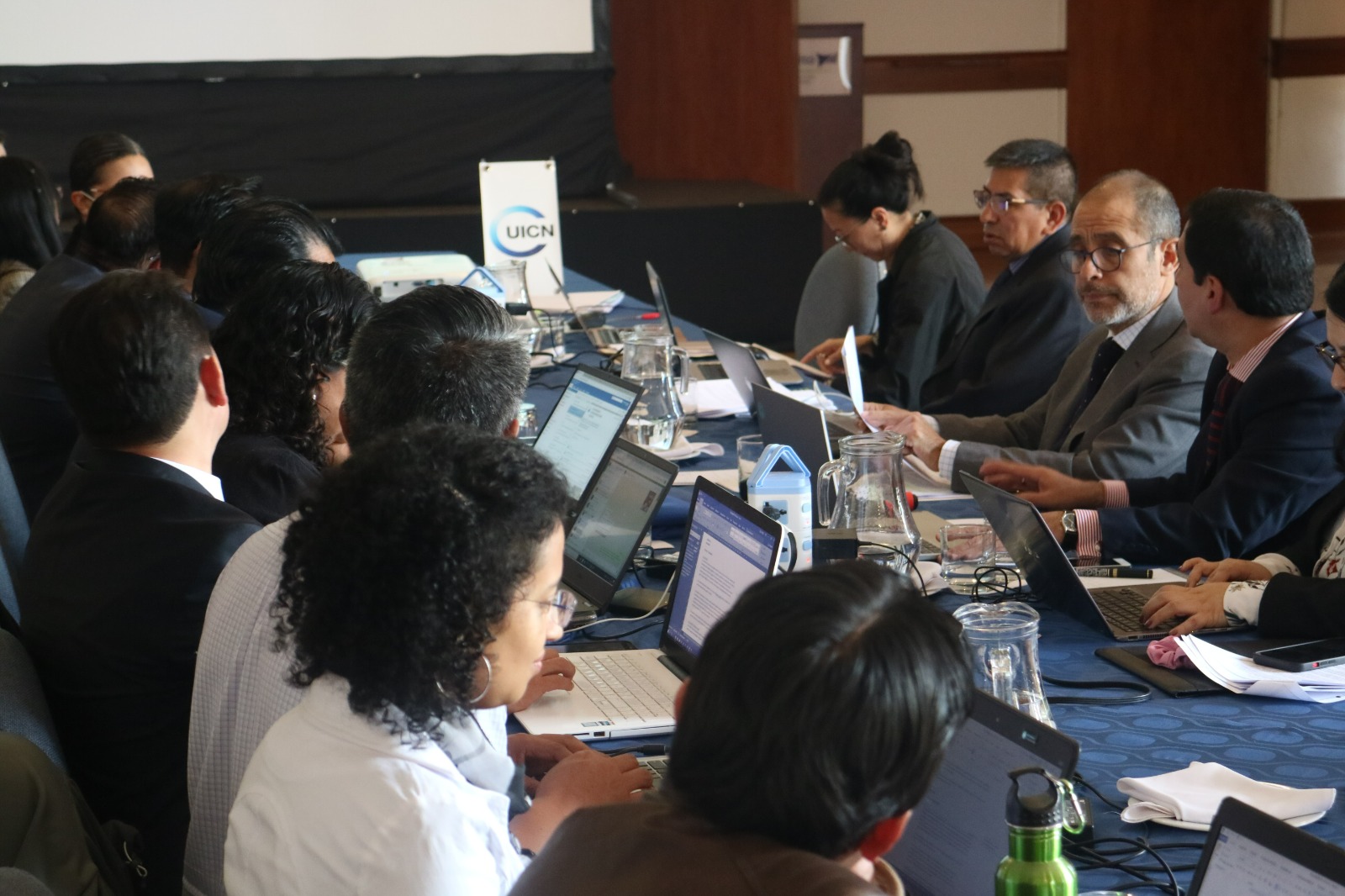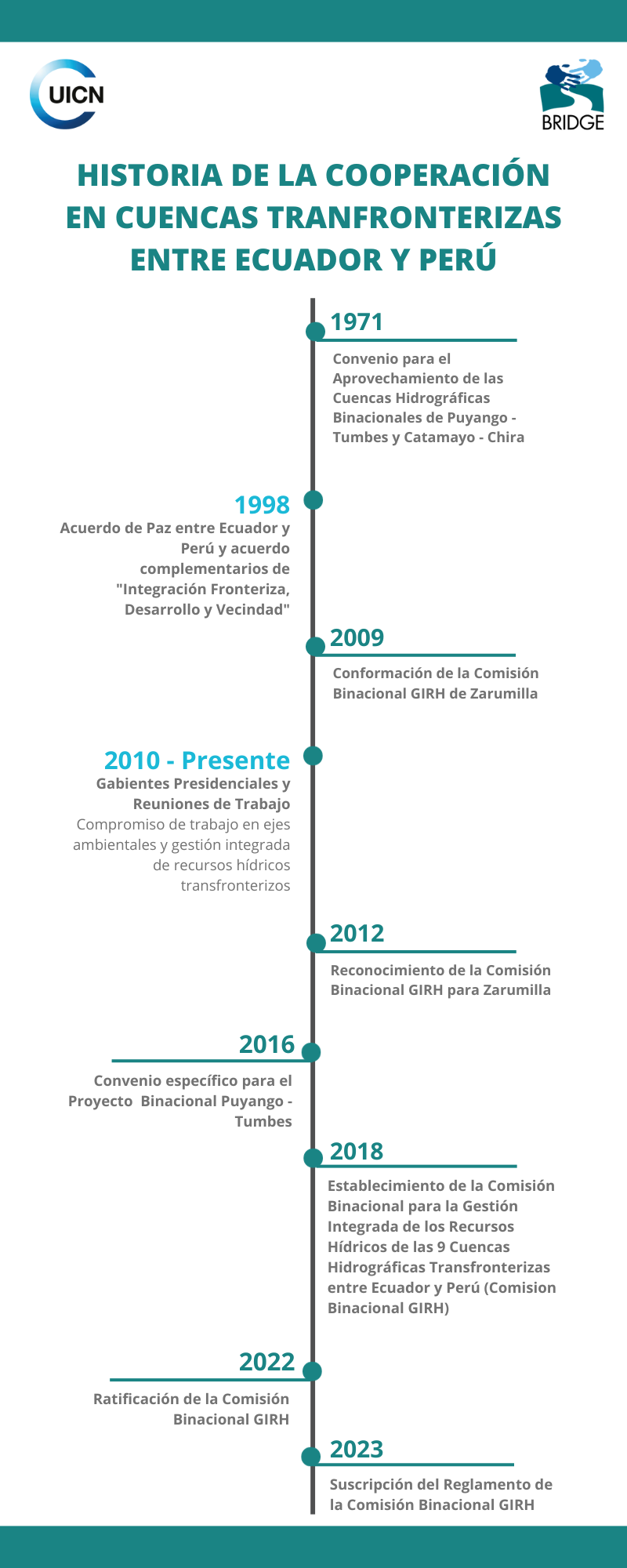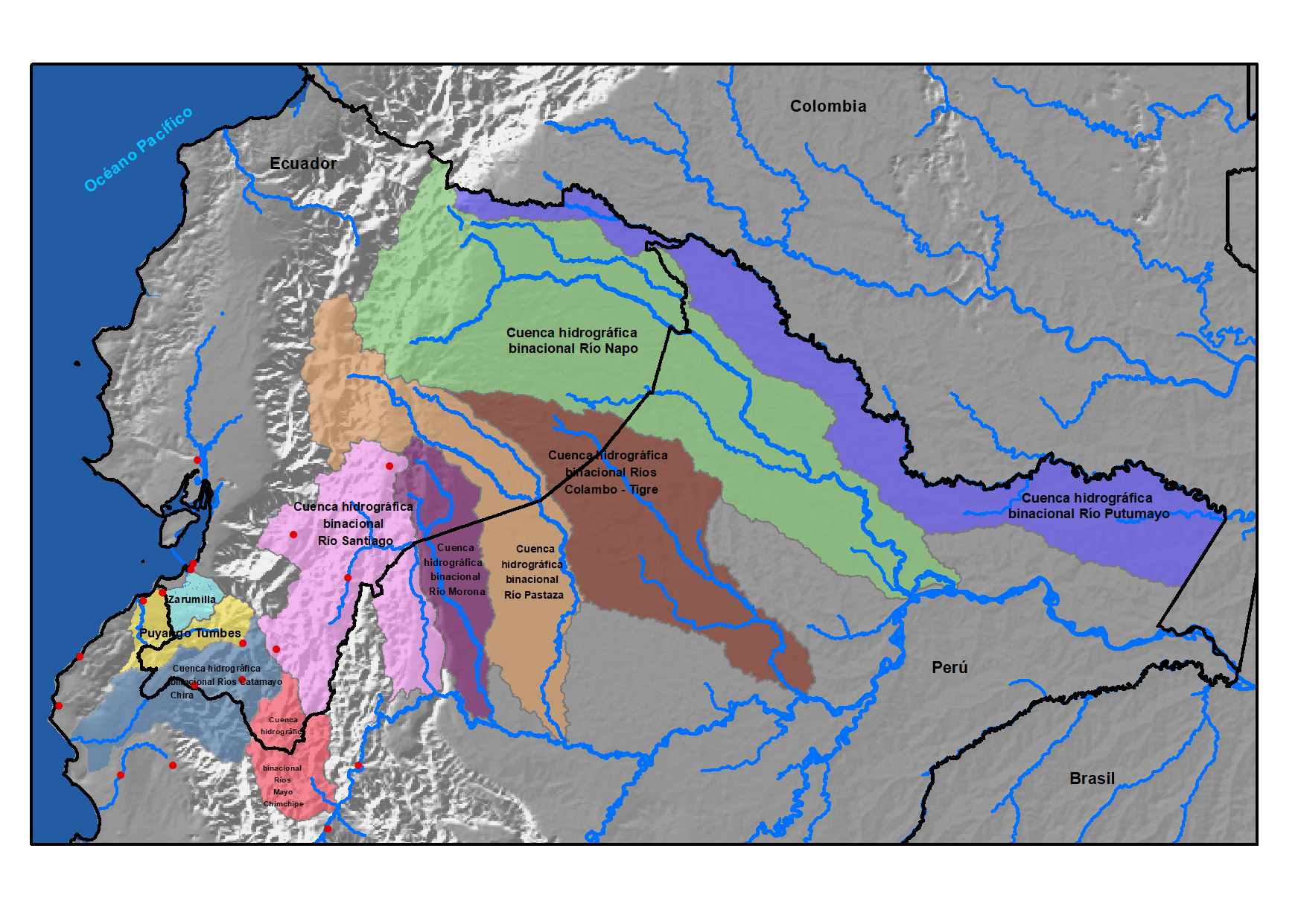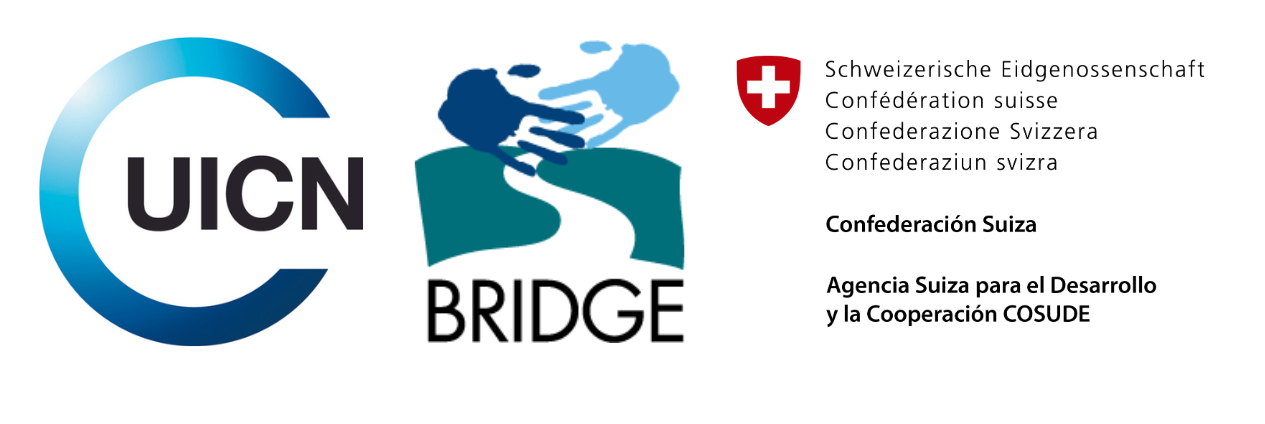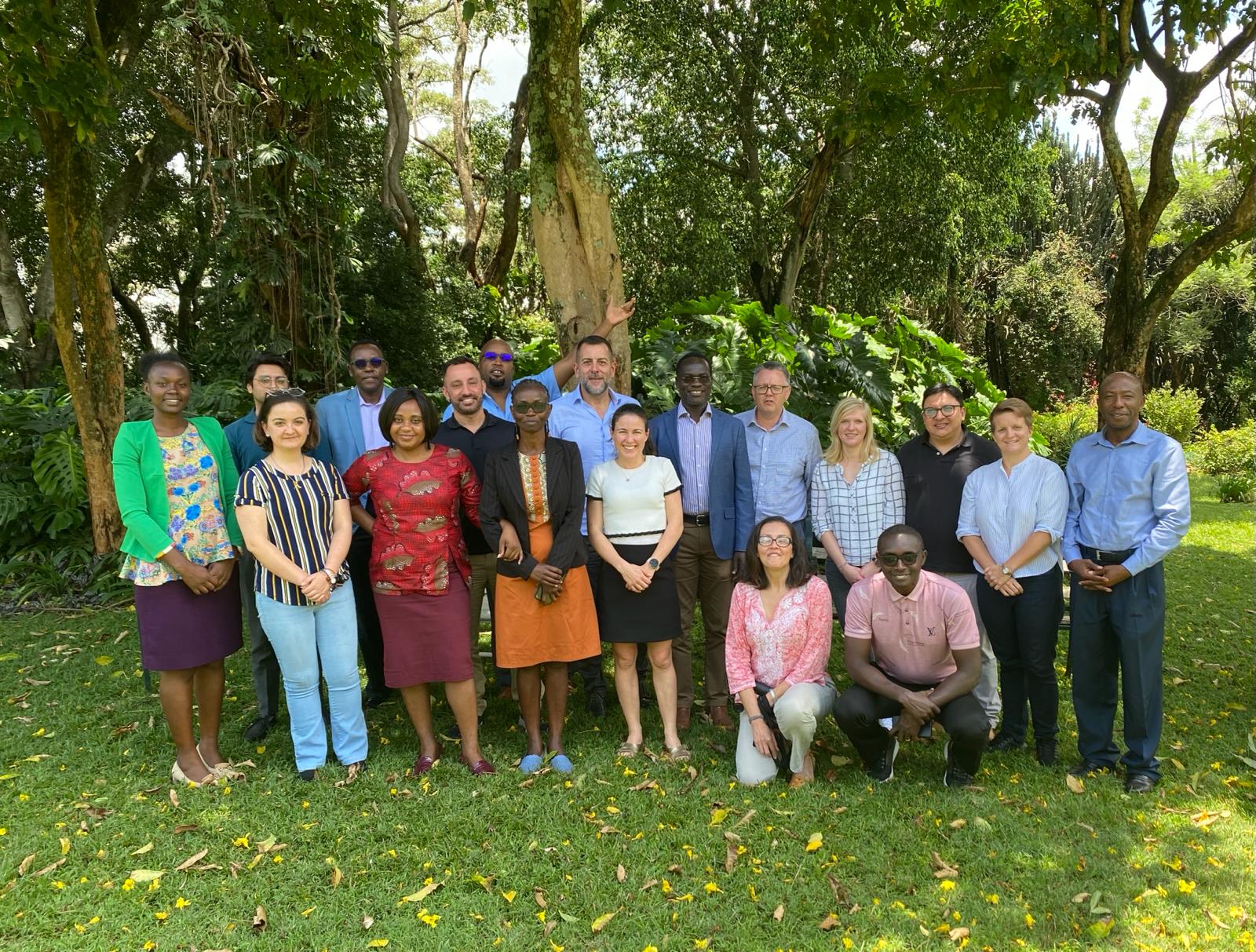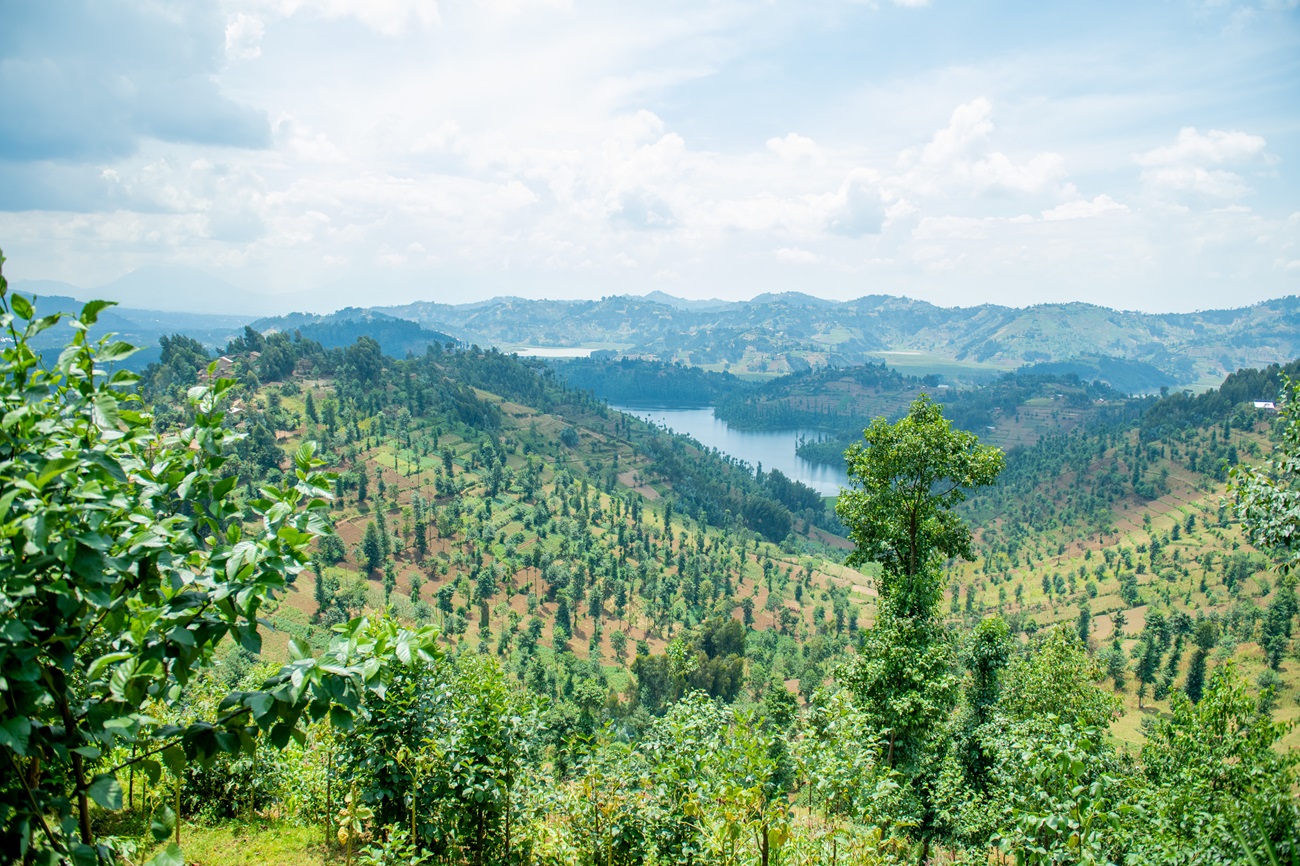The Ministries of Foreign Affairs of both nations signed the IWRM Binational Commission Regulations.
After a successful negotiation process, on Wednesday, October 25, 2023, the States of Ecuador and Peru formally endorsed the Regulation of the Binational Commission for the Integrated Management of Water Resources of the 9 Transboundary Watersheds between the Republic of Ecuador and the Republic of Peru (Binational Commission IWRM Ecuador—Peru).
This act reinforces a long history of cooperation dating back to 1971 (see infographic) with the signing of the "Agreement for the Utilization of the Binational Puyango-Tumbes and Catamayo-Chira Watersheds by Peru and Ecuador," as well as other agreements and declarations committing to deepening joint efforts surrounding water: benefiting the development of their populations, water security, ecosystem protection, the fight against climate change, and other matters of common interest. This milestone is part of the commemoration of the 25th anniversary of the Peace Agreement (1998) between the two nations, and a true example of the fulfillment of commitments to "Border Integration, Development, and Neighbourliness."
The need to establish institutions like the IWRM Ecuador—Peru Commission, signed in 2018, arose with the goal of consolidating bilateral collaboration for the better use and management of water resources in the nine shared watersheds between both nations: Zarumilla, Puyango-Tumbes, Catamayo-Chira, Mayo-Chinchipe, Santiago, Morona, Pastaza, Conambo-Tigre, and Napo.
The endorsement of the Regulation of the Agreement establishing the Binational Commission is a fundamental part of this process, as it operationalizes this mechanism as an effective space for bilateral coordination, participation, and articulation so that, with an ecosystemic and sustainable vision, it generates a positive impact on the quality of life of the population, productive activities, the environment, and freshwater ecosystems.
The International Union for Conservation of Nature (IUCN), through the BRIDGE project, whose main objective is to strengthen institutional capacity for the cooperation and management of transboundary watersheds, has supported this process from its creation.
The Binational IWRM Ecuador - Peru Commission
The Binational IWRM Commission will be chaired by a pro tempore presidency, exercised biennially and alternated by the representative of the governing body of water resources of Ecuador and Peru, as the case may be. The Commission will include representatives from the Ministries of Foreign Affairs, Environment, and Water, as well as representatives from the watersheds of the Pacific and Amazon basins, serving as the decision-making and bilateral negotiation body.
In addition, it will have a Binational Technical Secretariat led by the respective Water Authority of the country holding the presidency at the time. Its responsibility will be to technically and politically coordinate the Commission and the IWRM Committees of the 9 transboundary watersheds. The Secretariat will establish mechanisms and recommendations for developing proposals, conducting technical consultations, monitoring implementation progress, among other tasks.
Furthermore, IWRM Committees per Watershed will be established for each of the 9 transboundary watersheds. Their role is to develop and implement the Integrated Transboundary Water Resources Management (ITWRM) Plan, presenting proposals, implementing actions on the ground, exchanging knowledge, experiences, and technical information contributing to water security in their respective territories.
"We congratulate the Governments of Ecuador and Peru for achieving a framework for joint and coordinated work between both countries. This is a fundamental step for the effective management of transboundary watersheds, demonstrating their commitment and understanding of the great responsibility that comes with this shared resource. The next challenge is to create specific Committees for each Watershed and work plans based on the needs of each body of water," stated Gabriel Quijandría, Regional Director of IUCN for South America.
He further emphasized the role played by the BRIDGE project, which "has been linked to the creation of enabling conditions for the visions and expectations of both countries to materialize through these negotiations."
The Regional Office of the International Union for Conservation of Nature (IUCN) for South America remains committed to supporting this process through the BRIDGE project, promoting actions such as:
- Raising awareness about the Binational IWRM Commission Ecuador - Peru at the territorial level.
- Providing technical assistance for the development of complementary procedures that facilitate the operation of the Binational Commission IWRM Ecuador – Peru and the functioning of IWRM Committees per Watershed.
- Assisting in the establishment of Watershed-specific Committees.
- Organizing capacity-building and knowledge exchange spaces with a focus on water diplomacy.
Importance of IWRM
Water flows from mountaintops to coral reefs in the sea. The use and exploitation of water resources along this journey, which does not recognize subnational and international political boundaries, have impacts on the quantity, quality, or flow of water available for other users and ecosystems in the lower parts of the watershed.
Integrated water resources management is "a process that promotes coordinated management of water, land, and other related resources to maximize the economic and social well-being of populations, in an equitable manner, without compromising the sustainability of vital ecosystems" (GWP, 2000). This coordination demands robust water governance mechanisms, both at the local and regional levels, to ensure that there is enough water available for all users within a watershed.
Therefore, transboundary cooperation is an essential element of water security, regional integration, and stability. Sustainable water management is also a cornerstone for achieving the Sustainable Development Goals (SDGs), as clean, safe, and reliable water is inherent to health, food security, and economic opportunities.
------------------

